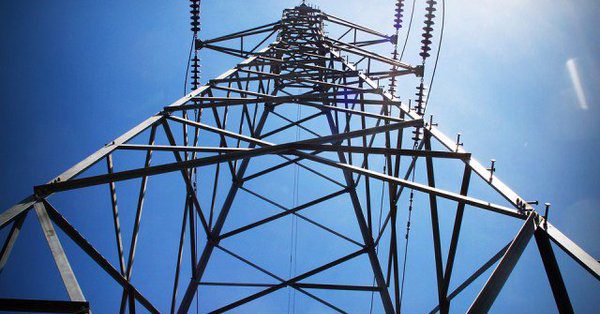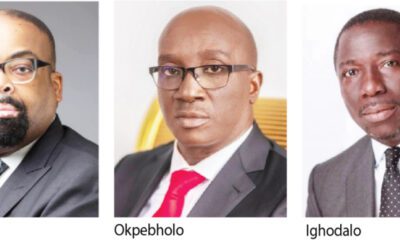Breaking News
Tariff Hike: DisCos moving customers back to Band A due to inconsistency
Prof. Wumi Iledare, Professor of Petroleum Economics and Policy Research, commented: “The new tariff may be based on an increase in the wellhead price for gas. We must agree, however, that N68 per KWhr is a substantially lower price ceiling than the current market clearing price. N68 is likewise not close to the fair return price of an economic good with a declining marginal and average cost curves.

Electricity distribution companies (DisCos) are currently moving to return some customers to Band A in order to charge the new tariff, citing a significant disparity between the number of feeders covered as Band A customers by the DisCos and what was approved by the Nigeria Electricity Regulation Commission (NERC).
Although NERC claims that the actual coverage area for the new tariff is only 480, Vanguard learned that the DisCos had registered 1,100 feeder coverage regions for Band A.
Vanguard was informed by a source in one of the DisCos in Lagos that they are now trying to get more Band A customers in order to reinstate those who were previously kicked out by NERC.
Remember that the NERC increased Band A consumers’ electricity rates by 230% on Tuesday, from N68 per kWh to N225/kWh.
Customers in Band A are those who receive 20 hours or more of electricity on average each day. Band A would no longer receive electricity subsidies from the federal government as a result of the recent NERC order.
In the meantime, the decision to raise tariffs for about two million users by 230 percent is anticipated to result in a monthly reduction of N137.1 billion in subsidy expenses under the new tariff system.
The Nigerian Electricity Regulatory Commission, or NERC, revealed in the April Supplementary pricing Order that the government would now only spend N104.6 billion monthly on subsidies. Prior to the pricing freeze, the annual subsidies that the government was required to pay increased to N241.66 billion monthly.
The government will provide the highest monthly subsidies of N18.95 billion in the four states (Niger, Kogi, Nasarawa, and Federal Capital Territory) supplied by the Abuja Electricity Distribution company, AEDC, according to Vanguard checks on the orders given separately to the 11 electricity companies.
Subsequent analysis revealed that the other DisCos’ customers are charged N17.03 billion by Ikeja Electric, N9.19 billion by Jos DisCo, N9.76 billion by Kaduna DisCo, N11.16 billion by Ibadan DisCo, N10.31 billion by Enugu DisCo, N11.01 billion by Benin DisCo, N6.86 billion by Yola DisCo, N10.12 billion by Port Harcourt DisCo, N10.79 billion by Kano DisCo, and N13.74 billion by Eko DisCo.
In the orders, the Commission stated that modifications to the indices used to determine the tariff earlier in the year necessitated the additional rise in electricity for the 1.9 million users in Band A.
The new tariff, according to NERC, is predicated on a foreign currency rate of N1, 463.3 to the dollar and an inflation rate of 31.7 percent. It claimed that it anticipates a rise in energy supply to 5,351 GWh.
The cost of transmission and administration increased by 34%, from N6.8/kWh to N9.1/kWh, while the cost of electricity generation increased by 63%, from N63.8/kWh to N103.9/kWh, thanks to NERC.
Energy expert Prof. Yemi Oke addressed the problem, stating that it was improper for the government to keep funding the power firms in order to guarantee that Nigerians would always have access to electricity, regardless of how little.
He emphasized that “the coming on board of the structure that we are beginning to have in terms of electricity tariff will necessarily show that we are now ready as a country to do the right thing,” adding that the government has gotten off to a solid start.
He said that the government’s action will increase liquidity in the sector, noting that distribution companies had been operating at a massive loss, resulting in a significant increase in loans across the value chain.
“95% of the DisCos are technically insolvent, which means they have never been able to earn enough money to repay their losses with profits. “A lot of them are exposed in terms of lending, a lot of them are in receivership, and the power sector is challenged in every way,” he continued.
In response to the hike, the President of the Nigeria Consumer Protection Network, Mr. Kunle Olubiyo, warned that DisCos would use the new order to raise tariffs across the board.
He wrote: “NERC people merely played with words and exploited the public’s psyche. The distribution companies would inevitably raise electricity tariffs unilaterally, which would definitely cut across all bands, as cost inputs and production factors are universally benchmarked.”
Prof. Wumi Iledare, Professor of Petroleum Economics and Policy Research, commented: “The new tariff may be based on an increase in the wellhead price for gas. We must agree, however, that N68 per KWhr is a substantially lower price ceiling than the current market clearing price. N68 is likewise not close to the fair return price of an economic good with a declining marginal and average cost curves.
“The social optimum price of electricity is also not N68 Naira either. So, NERC had to do something apolitical, which ought to have been done long before now but for institutional capture and political expediency, which beclouded their good judgment for too long. So it is better late than never. I guess the commissioners have come to understand the facts better than before.
“The accuracy of the tariff is conjectural because of the many unknowns. It is perhaps arrived at based on assumptions and facts within the context of the pricing model applied. I am hopeful that as more facts become available, the pricing model will be recalibrated in a self-adjusting manner! If what I am reading in the media is correct there is a price discrimination application based on daily supply hours. Such mechanism is not unusual in a segregated market demand structure for power.
“That NERC did not take input from the public is quite debatable. It depends on the definition of the phrase public input from media or NERC perspective within the context of Nigeria. Public hearing is usually mandatory a competitive economy, but institutions in Nigeria are yet to let go of the dictatorial propensity and transactional leadership tendency in governance.”
Similarly, the Executive Director, Power Up Nigeria, Mr. Adetayo Adegbemle, said: “Many of the maximum demand users (industries and productive users of electricity) are covered under Band A feeders – thereby catalyzing industry as a vehicle for economic development. This increased energy supply to these feeders will reduce their net energy spend because otherwise, they would have to depend on diesel gensets which cost twice the cost of grid energy per kWh.”
He also noted that “This tariff design is intentionally designed to be pro-poor. The Commission has reviewed the areas that are proposed for review, and they are generally the areas where consumers have higher affordability levels compared to other areas.
“Notwithstanding, the DisCos have a universal obligation to ensure that service is delivered to customers, and as part of this reform, they will be given clear Key Performance Indicators that envisage an upward migration of a certain number of feeders to band A every quarter, thereby improving the overall level of service to their customers under their franchise area.”
Not sure it applies to manufacturers – MAN
Meanwhile, reacting to the new tariff regime, Segun Ajayi-Kadir, Director General of the Manufacturers Association of Nigeria (MAN), said that the tariff hike does not seem to apply to heavy users like manufacturers.
He however, said consultations are ongoing to get full clarity.
Speaking to Vanguard, Ajayi-Kadir stated: “It is not clear those who are affected and I am still consulting, together with understanding the underlying issues.
“It does not appear to have a blanket application for heavy users like manufacturers, who are majorly maximum demand users. I will revert when we have full clarity.”


















